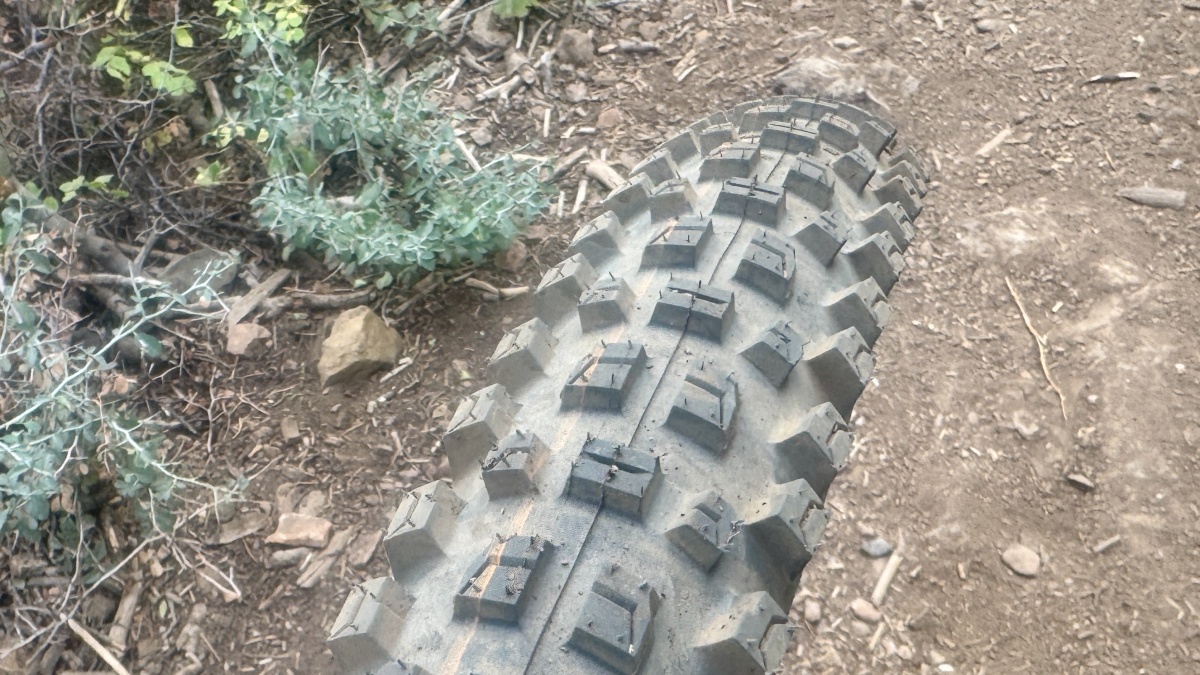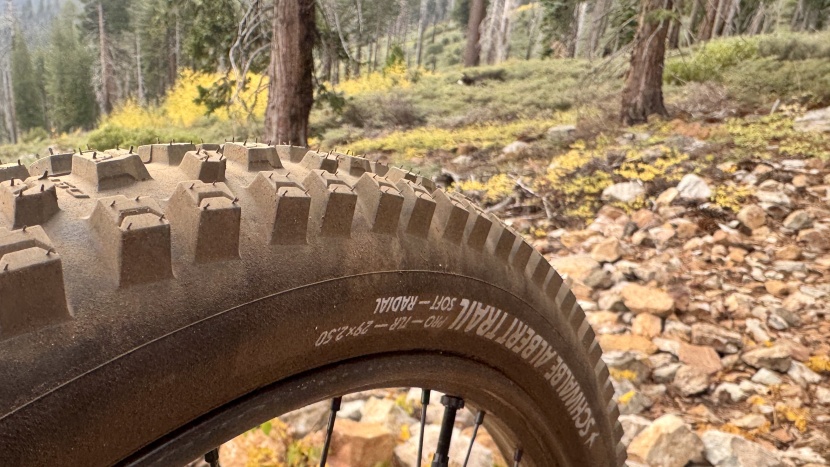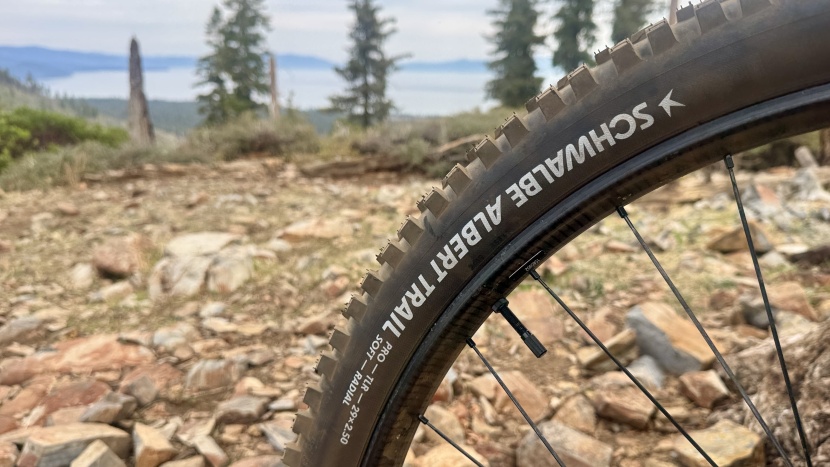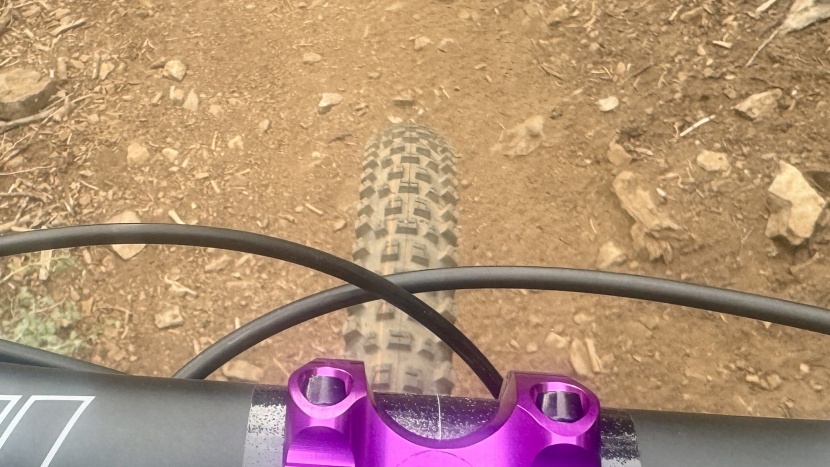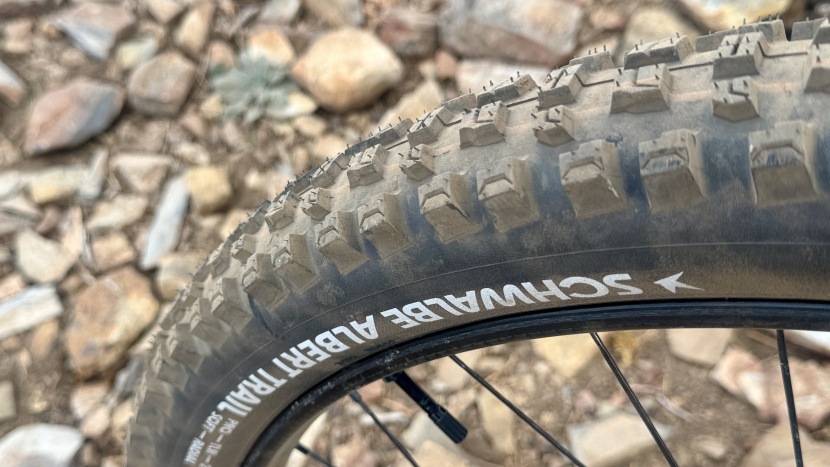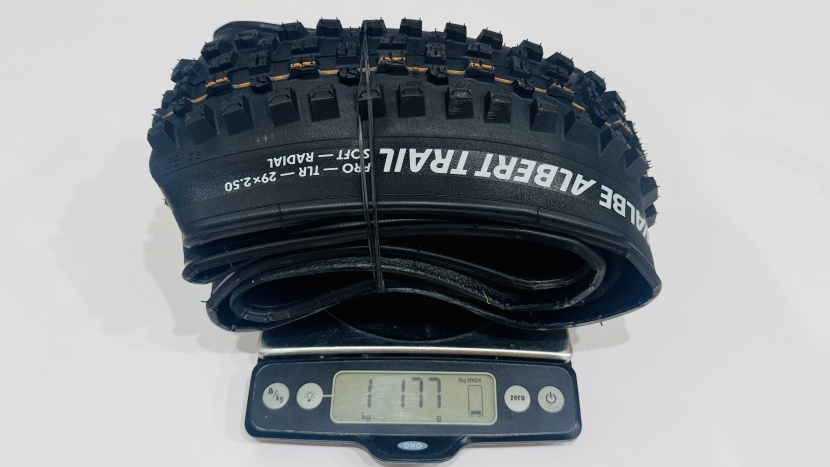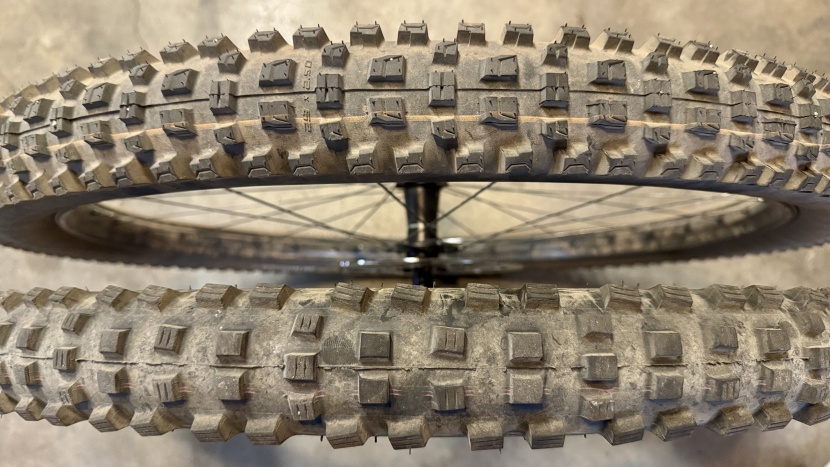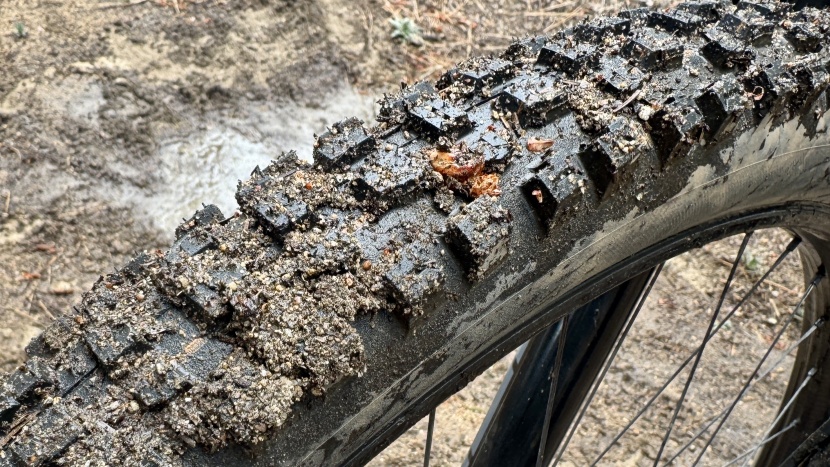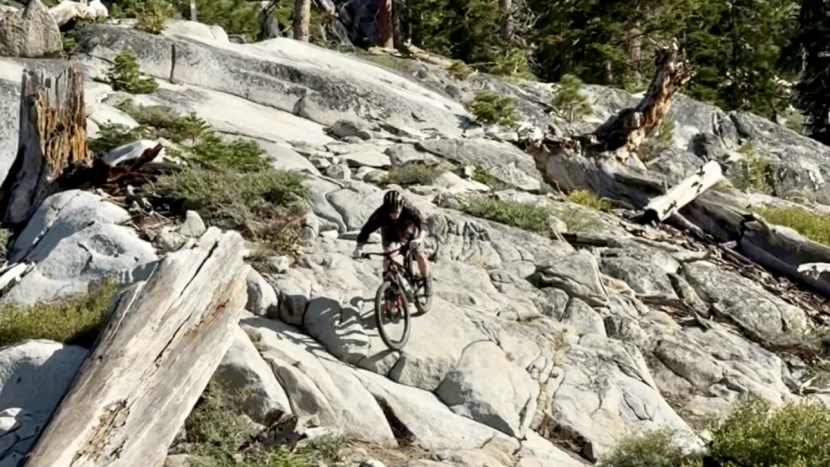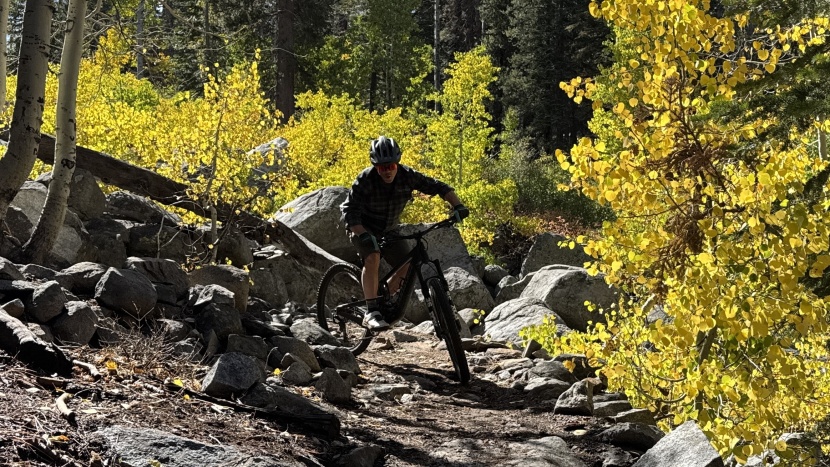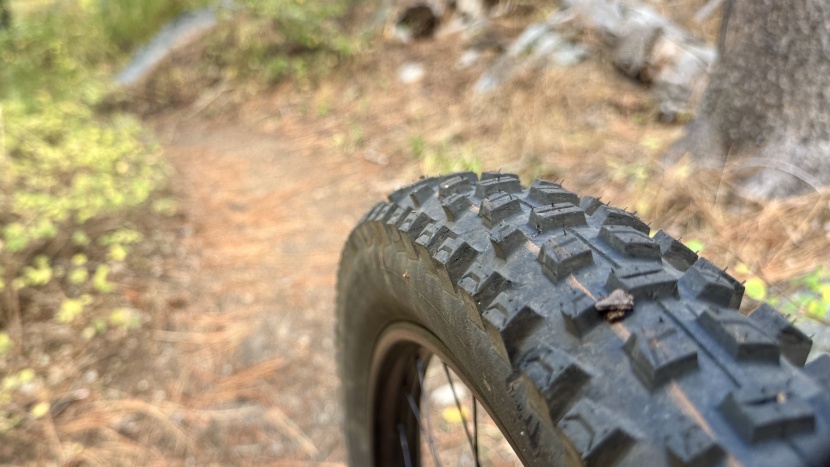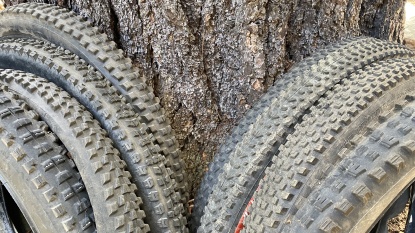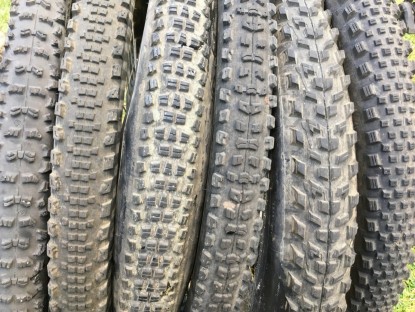Schwalbe Albert RADIAL Trail Pro Review

Our Verdict
Our Analysis and Test Results
Radial tire construction stands to revolutionize how tires are built and how tread patterns are designed. With greater conformity of the contact patch, this technology may enable tire manufacturers to rethink their approach to the trail. The Albert Radial Trail Pro we tested utilizes Schwalbe's Trail Pro casing and Addix Soft compound rubber to provide more grip than you might expect. Using a tighter tread pattern than the Magic Mary, the Albert offers a bit more versatility, and rather than raw grip, you get a blend of traction and speed that many will find to be in the Goldilocks zone. Available in 29 x 2.5 and 2.6", 27.5 x 2.5 and 2.6" with your choice of Trail Pro or Gravity Pro casing and a Soft or Ultra-Soft compound.
Cornering
I previously wrote about Schwalbe's change in the angle of overlap when they designed the casing for this tire. By reducing the level of overlap between cords, the tire can deform in a more localized manner, providing you, the rider, with a more confident perch on the trail. Schwalbe states that this method of construction yields a tire that provides 30% more contact area while maintaining the same tire pressure. The relation between the contact patch and cornering can't be understated; having more rubber on the ground is wildly beneficial. What Schwalbe does with that real estate complements the casing, giving you the ability to push deeper into a corner than you might have thought possible.
If your one criterion for a tire is cornering grip, the Magic Mary Radial is hard to beat, but the tall, sparse knobs don't roll with the greatest of ease. The Albert uses a tread pattern that has many similarities to the Mary, but condenses the knobs for a tighter configuration that provides a bit less rolling resistance. While the Mary can feel like overkill at times, the Albert strikes a balance of speed and grip that enduro riders crave. Leaning the tire over, you find a continual gradient of grip that doesn't seem to end. Both the Magic Mary and the Albert use cornering blocks in sets of two, and we found that the extreme edges of these tires felt similar, but the Magic Mary has a deeper bite.
We marvel at the simplicity of this design and are genuinely surprised by the significant impact it has on the way your tire conforms and grips. The tire feels like it can swallow small bumps that would otherwise be the suspension's job. The remarkable conformity of the casing makes the typical examination and discussion of the tread pattern feel less relevant. Anyone would be impressed with the cornering on the Magic Mary, just look at those knobs. Cornering on the Albert, you realize just how much more control you have, without feeling like you're riding mud spikes.
The tread layout of the Albert is closer to a Specialized Eliminator or Maxxis Assegai, with tighter spacing of the central knobs and the 2,3,2,3 blocking. The center of the tire is a bit busier with the 3 blocks stretching out into a transition zone that is vacant on a Maxxis Minion DHF or Magic Mary. As a result, the tire has a smooth rolling, gentle transition to full corner knobs. We found that intermediate bite to be reassuring at sub-critical cornering angles. On softer surfaces, where we achieved less casing flex, we experienced some drift. However, the aggressive side knobs helped us maintain stability as we found the optimal angle. Like the Mary, the paired side knobs are angled to give a bit more bite at higher speeds and increase cornering purchase, especially as you lean into activating them.
The center tread is more active than on most tires during cornering due to the Radial casing. The 2/3 knobs provide an inside-edge grip that gives you a planted and secure feeling at almost all angles. While most of our testing was conducted in dry and loose conditions, we found that they also excel on hardpack. However, traversing mud and snow didn't seem to be their forte; they performed well, but held onto some of the wetter substrate more than the Magic Mary.
The Albert's profile on 30mm rims is a bit more round than a Maxxis Minion or Assegai. The shoulder knobs don't seem to protrude as much into that squared-off geometry, and this may be part of the reason for the impressive cornering performance. Even when you're leaned deep into a corner, you're still engaging most of the tread pattern; the center knobs take on the role of pushing outward while the engaged shoulder knobs pull you into the turn.
We found the tread pattern to be much more versatile than the super-aggressive Magic Mary. You can see in the photo above how the spacing is much tighter on the Albert, and that provides not only a smoother transition into cornering but a tire that is more enjoyable to pedal. Where the Mary felt like overkill, the Albert felt like a more appropriate and efficient tool for the job. Weighing in at 1177 grams in the Trail Pro casing, the tire feels perfectly suited for front use and rear use in more extreme terrain. The Gravity Pro casing has a stated weight of 1350 grams in Addix Soft compound and 1330 grams in Addix Ultra-soft.
Pedal Traction
I feel like the Albert will be a better front tire in most environments, but we only know that from riding it in both positions. The tighter lugs give it some utility in the rear, where you can benefit from the malleable casing that helps provide a tank-track-like feel when climbing technical features. Unlike the Magic Mary, the Albert doesn't do as well in sticky mud with more knobs that hold on to the trail and pack up, reducing your traction. I never felt a lack of efficiency due to the tread or casing, but you can't escape that the tire is a bit heavier than others, and you feel that rotational weight.
Braking Traction
On the front or rear, braking performance is excellent, and it likely has more to do with, you guessed it, the radial casing. The tread pattern has sufficient braking knobs in alternating blocks, but the longer contact patch lets you lean into the braking power more than you can with most tires. When braking on a standard tire, you're stopping power comes from the traction the knobs can maintain with the ground, and to some degree is increased as you drop tire pressure and increase your contact patch. That's true with the Albert as well, but its contact patch is a bit larger, even at higher pressures, giving you more of those knobs digging into the ground when you want to scrub your speed.
Pulling a stoppie or a high-power braking maneuver is easier on these tires (with considerable input from a set of Mavens). Grabbing a handful of brake results in rapid deceleration, and unless the ground brakes loose, you're less likely to initiate a skid.
Rolling Resistance
Rolling resistance can be hard to quantify, but feedback from all of our testers was pretty close to unanimous. For starters, you ride the radial casing tires at a slightly higher pressure to get a similar feel. My typical trail setup is Maxxis Minion DHR/Assegai at 24 psi in the rear and 22 psi in the front. With the Alberts, I found agreeable pressures at about 15% higher, riding the rear at 28 psi, and the front at 25 psi. With similar cornering, climbing, and braking traction, you'd expect similar rolling resistance, but we felt less; the Albert felt slightly faster when climbing on gravel or paved surfaces. In technical trail climbing, the Albert didn't feel like it had the same advantage, but it didn't feel slower than my typical setup.
This tire has enough knob density that it doesn't lumber from lug to lug like the Magic Mary. The overall traction on rocks and roots was excellent, and the soft compound did a great job of gripping slippery bits of trail. On a nearby trail that descends a glacial moraine, the terrain features a predictably loose rock interface, making it hard to find purchase; the Albert would roll sideways in places where the Magc Mary found grip. So, if extreme grip is what you're after, the Mary is probably better suited for that, while the Albert feels better all around.
Longevity
We put about 130 miles on a set of Alberts without much noticeable wear. There were no detached lugs or tears in the casing; the wear to the rear was predictably a bit more than the front, but primarily along the center knobs of the tire. It's been our experience that the Addix Soft compound wears well in the loam and granite slab riding we tend to focus on, while the Addix Ultra-Soft wears rapidly. In addition to the rapid wear, the Ultra-Soft holds on to small bits of gravel and sand, peppering you with them at speed, while the Addix Soft spares you the dirt shower.
Installation
Schwalbe tires always seem to be a bit more trouble to install. As a long-time bike mechanic, there are very few tires I can't install by hand, but the Albert required the use of a tire lever. With a couple of ounces of sealant, it set up quickly on a set of RaceFace Era wheels that have a fairly standard concave center cavity. Installing them on Zipp 3 Zero Moto wheels proved to be far more challenging. The Zipp rims are single-walled and have a flat section between sidewalls with slightly raised nipples. This caused an installation issue where the tire fit too tightly and couldn't stretch over the nipple protrusions. I had to pull the tire off the rim multiple times to get the bead to seat on each side of the nipples. While this is a fairly isolated incident, it illustrates the drawbacks of tires that fit so tightly. I really hope I'll never have to put a tube in one of these trailsides.
Value
Schwalbe tires tend to be a bit more expensive than the other brands of rubber available in your local bike shop. The MSRP is $108, which is a significant amount, but tires have a substantial impact on your performance. If you dropped $6-10,000 on a new bike, these tires are just a drop in the bucket, but for others, all those dollars might be better used somewhere else on your bike. If I were riding the Addix Ultra-Soft compound, I might be tempted to carry my bike over sections of pavement, but the small premium you pay for this tire feels worth the squeeze. Is $108 per tire a good value? Obviously not, but if you're comparing it with some tires that are $10 or $20 less, the radial casing is a novel upgrade.
Conclusion
Life is expensive, and sweet mountain bike tires are just one of life's expenses, right? For me, achieving the ultimate combination of grip and speed increases my enjoyment of the ride, the sport, and my life. I won't tell you that everyone out there should drop this kind of cash on a boutique set of rubber, but Schwalbe is definitely on to something, and we expect radial tires to become more ubiquitous in the marketplace. We hope that more tread pattern options will become available for radial tires. For now, you'll be separated from a bit more of your paycheck for a little better performance; only you can decide if that's a fair shake.


